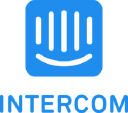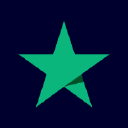Our SaaS is Backed by Y Combinator and Grew to $1.6M ARR
Hello! Who are you and what business did you start?
Hey everyone! I’m Mas, founder of Queue. We're a platform that allows you to launch your productized service business. Add checkout, client portal, and project management tools to your website with full white-labeling so you give your clients a seamless experience from hiring to sending your first deliverable for review.
If you’re not using Queue for your productized service agency, then you’re probably gluing together 6 different software together. One for storage, checkout, client portal, feedback, taskboard, referrals, etc. The list goes on.
Instead, we built a product that’s specifically designed for selling productized services and it’s all white labeled on your website. So your clients can now pay on your website, submit their first request, and review the work you submit to them without jumping from software to software.
We’re ~$1.6M/ARR and have been growing very fast in the past 3 months. We’re aiming to do our series A in Q1 or Q2 of 24.

Download the report and join our email newsletter packed with business ideas and money-making opportunities, backed by real-life case studies.

Download the report and join our email newsletter packed with business ideas and money-making opportunities, backed by real-life case studies.

Download the report and join our email newsletter packed with business ideas and money-making opportunities, backed by real-life case studies.

Download the report and join our email newsletter packed with business ideas and money-making opportunities, backed by real-life case studies.

Download the report and join our email newsletter packed with business ideas and money-making opportunities, backed by real-life case studies.

Download the report and join our email newsletter packed with business ideas and money-making opportunities, backed by real-life case studies.

Download the report and join our email newsletter packed with business ideas and money-making opportunities, backed by real-life case studies.

Download the report and join our email newsletter packed with business ideas and money-making opportunities, backed by real-life case studies.
























